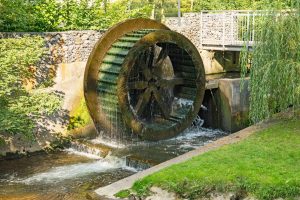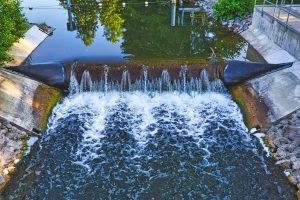Current EU political processes with relevance for small hydropower
As the EU seeks to meet its renewable energy targets, small hydropower is increasingly gaining attention. However, navigating the EU political processes can be challenging for those in the industry. This article will explore the current EU political landscape and its relevance for small hydro, providing insights into how the industry can engage with European and national policymakers and shape future policies. In response to Russia’s invasion of Ukraine, the European response to high energy prices and energy security problems caused the European Commission presented the REPowerEU plan last May. Among other things, it contains proposals for a faster increase in the share of renewable energies in order to quickly replace fossil fuel imports and reduce energy prices. EREF’s position is that in order to achieve the REPowerEU goals of decarbonisation and greater energy independence for Europe, all available forms of renewable energy must be used, both from the point of view of increased renewable energy production and better integration of the energy system.

© Manfred Mazi_pixelio.de
Although small hydropower, with its economic and energy benefits, opportunities and potential for expansion, could help to achieve these goals, the European small hydropower sector remains on the political defensive. With reference to the latest WWF Living Planet Report 2022, environmental organisations are denouncing small hydropower in broad-based political campaigns as environmentally harmful and irrelevant to the energy transformation and are calling for a halt to expansion and the dismantling of small hydropower plants. With the intense negotiations on the amendments of the Renewable Energy Directive (RED), the EREF Small Hydropower Chapter successfully lobbied for (small) hydropower to remain eligible for so-called “go-to areas”. These “go-to areas” – which should actually be called “acceleration areas” – are areas designated by governments in which a significantly accelerated and, above all, simplified approval procedure applies to renewables. Furthermore, in discussions with the trilogue negotiating team, EREF was opposed to the demand for further restrictions and tightening of the EU legislation that already comprehensively covers hydropower, especially the Water Framework Directive. The Renewable Energy Directive, which has as its objective the development and promotion of these types of energy, must not be used to hinder the continued existence and expansion of (small-scale) hydropower. EREF therefore strictly rejected the European Council’s proposal to exclude hydropower from the provisions of the RED. Already last year, EREF worked successfully to ensure that the negotiating positions of the European Commission and the European Parliament consider the expansion of (small-scale) hydropower to be in the overriding public interest and therefore also suitable for “go-to areas”. In parallel, EREF, in cooperation with the Vienna University of Technology, showed in a study that significantly more ambitious 2030 targets for renewables and energy efficiency in the EU are feasible and, above all, economically beneficial. Then EREF introduced a final amendment to the ongoing negotiations. This amendment provides for the Commission to be mandated by the new Renewable Energy Directive to adapt European environmental legislation accordingly and to give priority to renewable energy.
On 30 March 2023, EU legislators reached a provisional agreement on the Renewable Energy Directive (RED III) finalising a long negotiation process. The provisional agreement includes accelerated permitting procedures for renewable energy projects. The purpose is to fast-track the deployment of renewable energies in the context of the EU’s REPowerEU plan to become independent from Russian fossil fuels, after Russia’s invasion of Ukraine. Member states will design renewables acceleration areas where renewable energy projects would undergo simplified and fast permit-granting process. Renewable energy deployment will also be presumed to be of ‘overriding public interest’, which would limit the grounds of legal objections to new installations. The new legislation text of the RED will be available in late May 2023.
Small Hydro to be included in NECPs
At the national level, small hydropower stakeholders should use the 2023 to lobby ministries of environment, energy and economy for a strong inclusion and expansion of small hydropower in the second National Energy and Climate Plans (NECPs). These plans include, among others, national renewable energy targets and measures for achieving the EU-wide 2030 renewable energy targets. National governments submitted their first NECPs three years ago. For the second version, many adjustments have to be made to the now new EU legislation, from which the small hydropower sector in particular can benefit. As with the first NECPs, EREF and its members will analyse the governments’ first drafts in summer 2022 and submit concrete proposals for improvement to the European Commission and national governments. The governments should then ideally incorporate these into the final version, which is scheduled for summer 2024.
Nature Restoration Law
Another important policy dossier is the new EU Nature Restoration Law, proposed by the European Commission in June 2022, which aims to protect and restore Europe’s natural ecosystems. The proposal was announced as part of the EU Biodiversity Strategy and is the first significant addition to European environmental law in more than 20 years. Previously, the Habitats Directive, the Water Framework Directive and the EU Birds Directive as well as the designation of Natura 2000 protected areas were the main instruments of environmental protection. The aim is to strengthen existing EU nature conservation law and to include additional binding measures to restore habitats that have already been destroyed. The Commission has presented the EU renaturation law in the form of a regulation. This means that it will enter into force in the Member States immediately after the conclusion of the negotiations in the European Parliament and the Council. Currently, the European Parliament is still negotiating its position. After that, the Commission, the Parliament and the Council will negotiate the final law in so-called Trilogue negotiations. As part of the Nature Restoration law, the EU pronounced the goal of having 25,000 km of “free-flowing” rivers in EU countries by 2030. Therefore, the EU will publish a new guidance document in July 2023 that will include, among other things, guidelines for the decommissioning of obsolete barriers. As a result of, among other things, EREF’s contribution to last year’s public consultation, the Commission has agreed to find more beneficial solutions for the small hydropower sector in this regard. EREF, together with other hydropower organisations calls on decision-makers to find a balanced approach to adopt all feasible measures to keep the impact on nature as low as possible and achieve a net positive outcome for the hydropower sector.

© Pixabay / Lutz Peter
Join ongoing hydropower initiatives
The new EU project ETIP Hydropower (9/22 – 8/25) will closely link the EERA Joint Programme Hydropower to the new European Technology and Innovation Platform (ETIP) for hydropower. It succeeds the Hydropower Europe project (2018-2022) which created a forum for more than 600 stakeholders representing all sectors. These stakeholders participated through a program of review and consultation addressing needs of the whole hydropower sector targeting an energy system with high flexibility and renewable energy share. Based on this extensive consultation, the Hydropower Europe Forum developed a Research and Innovation Agenda (RIA) as well as a Strategic Industry Roadmap (SIR), towards implementation of the vision “Hydropower as a catalyst for the successful energy transition in Europe” within the framework of the European Green Deal. ETIP HYDROPOWER further aligns and coordinates these industry RIA and SIR strategies to provide consensus-based strategic advice to the SET Plan covering analysis of market opportunities and research and development funding needs, biodiversity protection and ecological continuity. Another goal is deepening the understanding of innovation barriers and the exploitation of research results. EREF is responsible for the coordination of and input for working groups, to ensure consistency between ETIP outputs and emerging policy priorities and to disseminate project results to its hydropower network. The PEN@Hydropower project, which also started in Sept. 22, is an additional networking initiative to bring academic and industrial institutions together to discuss the situation of hydropower, research fields and solutions. The project sets up a network of 51 partners from 33 countries who have a wide variety of expertise needed for establishing sustainable hydraulic power solutions. It organises workshops to coordinate research activities and provides capacity-building through summer training schools. The EU project HYPOSO promotes the European small hydropower industry (equipment producers, project developers and investors) in Africa and Latin America. The HYPOSO Platform is an online Marketing Platform for the small hydropower industry to facilitate business contacts with the stakeholders in Africa and Latin America. Registration is free of charge and registered companies are individually marketed to other members. When registered on the platform, HYPOSO platform users have exclusive access to the GIS online map with all Hydro Power relevant information and resources (i.e., > 2.000 potential sites) initially for Bolivia, Cameroon, Colombia, Ecuador and Uganda. It also includes early and exclusive information about business opportunities for deployment in the target countries exclusively provided to registered users. EREF and partners of the EU project HYPOSO developed a new handbook on small hydropower. In addition to information on the history and on the application areas of small hydropower, this handbook shows and describes various technical solutions for the small hydropower sector. Valuable information on planning and financing models complete this book.